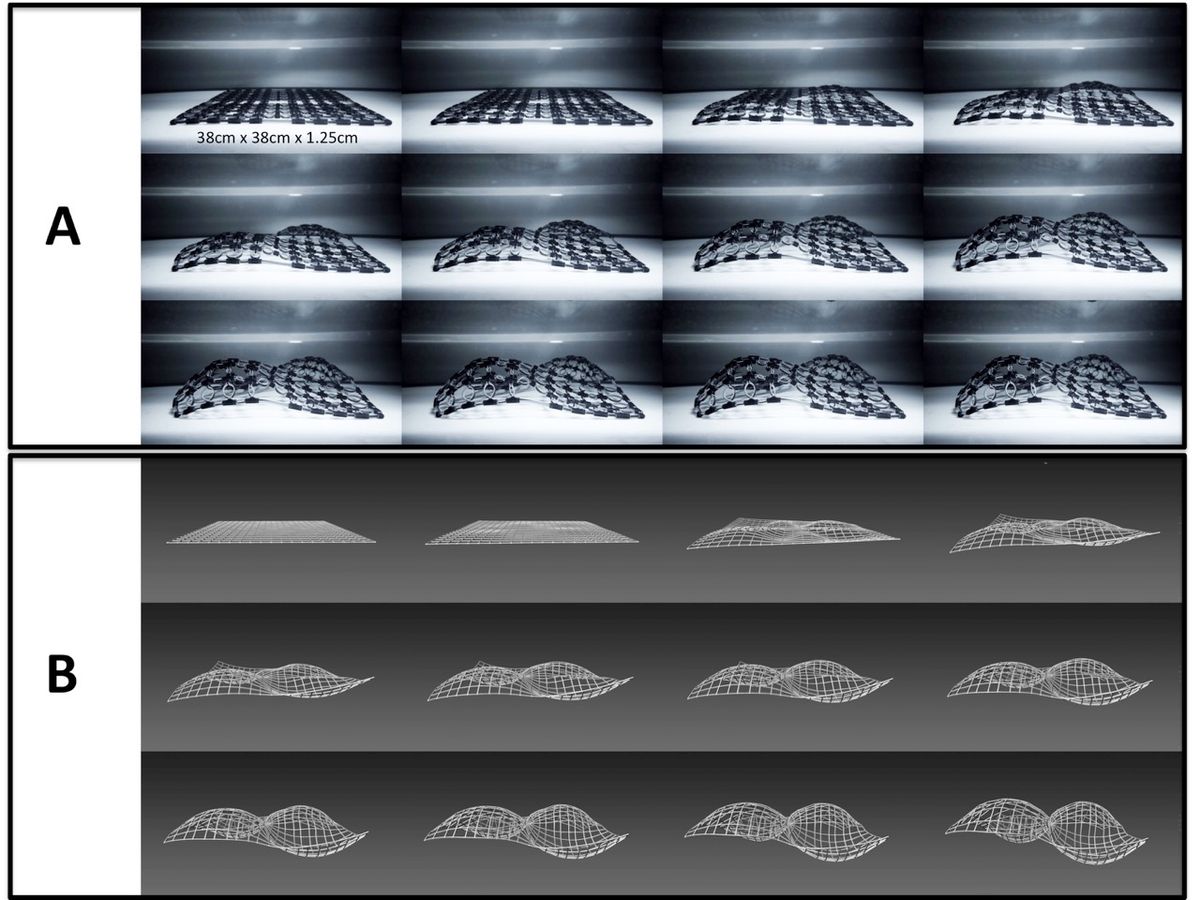'4D Printing' Makes Shape-Shifting Structures

Using a new technique known as 4D printing, researchers can print out dynamic 3D structures capable of changing their shapes over time.
Such 4D-printed items could one day be used in everything from medical implants to home appliances, scientists added.
Today's 3D printing creates items from a wide variety of materials — plastic, ceramic, glass, metal, and even more unusual ingredients such as chocolate and living cells. The machines work by setting down layers of material just like ordinary printers lay down ink, except 3D printers can also deposit flat layers on top of each other to build 3D objects.
"Today, this technology can be found not just in industry, but [also] in households for less than $1,000," said lead study author Dan Raviv, a mathematician at MIT. "Knowing you can print almost anything, not just 2D paper, opens a window to unlimited opportunities, where toys, household appliances and tools can be ordered online and manufactured in our living rooms."
Now, in a further step, Raviv and his colleagues are developing 4D printing, which involves 3D printing items that are designed to change shape after they are printed. [The 10 Weirdest Things Created By 3D Printing]
"The most exciting part is the numerous applications that can emerge from this work," Raviv told Live Science. "This is not just a cool project or an interesting solution, but something that can change the lives of many."
In a report published online today (Dec. 18) in the journal Scientific Reports, the researchers explain how they printed 3D structures using two materials with different properties. One material was a stiff plastic, and stayed rigid, while the other was water absorbent, and could double in volume when submerged in water. The precise formula of this water-absorbent material, developed by 3D-printing company Stratasys in Eden Prairie, Minnesota, remains a secret.
Sign up for the Live Science daily newsletter now
Get the world’s most fascinating discoveries delivered straight to your inbox.
The researchers printed up a square grid, measuring about 15 inches (38 centimeters) on each side. When they placed the grid in water, they found that the water-absorbent material could act like joints that stretch and fold, producing a broad range of shapes with complex geometries. For example, the researchers created a 3D-printed shape that resembled the initials "MIT" that could transform into another shape resembling the initials "SAL."
"In the future, we imagine a wide range of applications," Raviv said. These could include appliances that can adapt to heat and improve functionality or comfort, childcare products that can react to humidity or temperature, and clothing and footwear that will perform better by sensing the environment, he said.
In addition, 4D-printed objects could lead to novel medical implants. "Today, researchers are printing biocompatible parts to be implanted in our body," Raviv said. "We can now generate structures that will change shape and functionality without external intervention."
One key health-care application might be cardiac stents, tubes placed inside the heart to aid healing. "We want to print parts that can survive a lifetime inside the body if necessary," Raviv said.
The researchers now want to create both larger and smaller 4D-printed objects. "Currently, we've made items a few centimeters in size," Raviv said. "For things that go inside the body, we want to go 10 to 100 times smaller. For home appliances, we want to go 10 times larger."
Raviv cautioned that a great deal of research is needed to improve the materials used in 4D printing. For instance, although the 4D-printed objects the researchers developed can withstand a few cycles of wetting and drying, after several dozen cycles of folding and unfolding, the materials lose their ability to change shape. The scientists said they would also like to develop materials that respond to factors other than water, such as heat and light.
Follow us @livescience, Facebook& Google+. Original article on Live Science.











